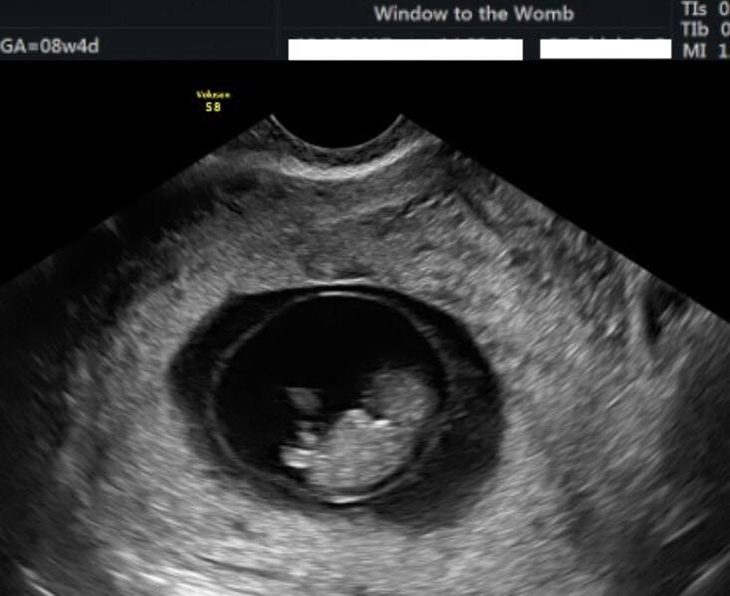Future Treatment For Vision Impairment To Use The Same Ultrasound Machine To Take Baby’s First Pictures

Currently, there are no non-invasive therapies to help treat vision loss in the retinas of people, but researchers are now looking into a solution, and it’s coming in the unlikeliest of places, from the sense of sound. Ironic, considering the sense in question is sight.
Some of the more common retinal diseases can cause degeneration of the light-sensitive photoreceptors in the eye. At the moment, ophthalmologists have been using electronic technology in order to directly stimulate retinal neurons by introducing electrode devices inside the eye, which is both an expensive and invasive surgery when done.
In order to find a better solution, a team from the University of Southern California is using this same technology that takes photos of a fetus through sending and receiving sound waves through the stomach of a pregnant woman. It’s called ultrasound stimulation to replace electric stimulation.
One of the members of the research group, professor of ophthalmology and biomedical engineering at USC, Mark S. Humayun, happens to be one of the inventors of Argus II, the world’s first artificial retina.
Just like how shapes and bright spots tend to appear when you push gently on your eyeball with your eyelids closed, the researchers discovered that by applying pressure to the eye, it can activate neurons and send signals to a person’s brain.
While a normal eye is activated by light, in this study, the team stimulated blind eyes by using mechanical pressures that are generated by ultrasound waves. Then a wearable ultrasound device, such as a contact lens, would generate the ultrasound waves in order to stimulate the retina.
Explained by Gengxi Lu, a Ph.D., a student also working on the project, “The neurons present in the retina of the eye possess mechanically sensitive channels that respond to mechanical stimulation. These neurons are activated when we use ultrasound to generate mechanical pressure.”
So How Does it Work?
In pre-clinical studies, in order to test this ultrasound approach, the USC team ‘stimulated a blind rat’s eyes using high-frequency ultrasound waves that are inaudible to humans.’
In this particular case, the research group made a small ultrasound device for retinal stimulation ‘that can be directed at a specific region of the eye to send sound waves to the retina, which is located in the back of the eye.’
The study showed that through using these high-frequency sounds that can be maneuvered and focused on a precise area of the eye, they were able to demonstrate that when the ultrasound waves are projected as a pattern, like the letter ‘C’ for example, the rat’s brain was also able to pick up a corresponding pattern.
Meanwhile in humans, the researchers were not able to get direct answers ‘about the visual experiences about the rat’s visual experiences during the ultrasound stimulation.’
In order to answer the questions of what the rat was able to visualize from the ultrasound waves exactly, the team also measured the visual activity directly from the rat’s visual brain area that’s known as the visual cortex by attaching a multi-electrode array.
Then based on the visual activities that were recorded from the brain, the researchers also found that the rat was able to discern visualizations that were comparable to the ultrasound stimulation pattern projected to the eye.
You can find the study published in BME Fronters.
Applying for a Patent for the Future
At that the moment, the research is funded by a four-year $2.3 million grant from the National Eye Institute(NEI). The team also applied for another NEI translational grant recently so that they can take the study to the next level, which is testing the approach using non-human primate models before they conduct human clinical trials.
Professor of biomedical engineering and ophthalmology at USC, Dr. Oifa Zhou, who is also leading the research, said, “Right now, we are using a transducer placed in front of the rat’s eyeball to send the ultrasound signals to the retina, but our final goal is to create a wireless lens transducer.”
Currently, the team is analyzing the capabilities of ultrasound technology for vision study, but the future goal is to produce sharper images, as well as install the ultrasound transducer on a wearable contact lens for next generation.
At the moment, there is a patent pending for this new ultrasound technology in the hopes that it will change the way visual impairment can be treated in the years to come.
You can see more on the research in the video below.



